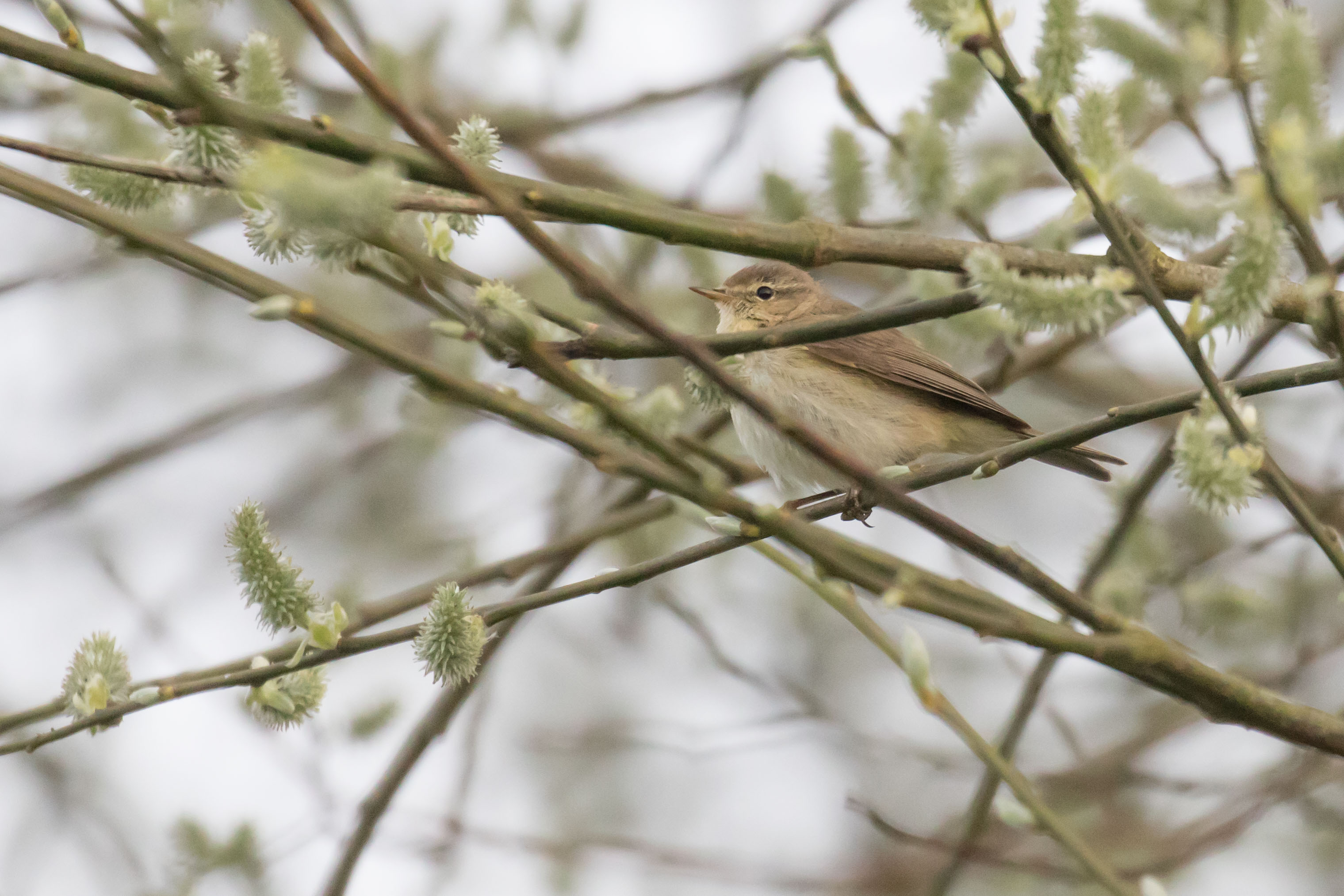The excitement of seeing Oxfordshire’s second Iberian Chiffchaff on Monday evening was tempered by two things: firstly, it was cold and windy, so the bird was rather secretive and the light was terrible; secondly, by the fact that whilst the bird was producing lots of classic Iberian Chiffchaff song, up to half of the song that we (Dave Lowe, Andy Last, Ian Reid and myself) heard that evening from this bird appeared to be similar to that of Common Chiffchaff. This raised the question in my mind of whether this bird could be a mixed singer?

Iberian Chiffchaff, unlike Common Chiffchaff, has different advertising and conflict songs:
“In the context of spring vagrancy, Iberian Chiffchaff has two major song types: an advertising song used by males trying to attract a mate and a conflict song used primarily during antagonistic interactions with other males. The same is true of Common Chiffchaff, although in that species the advertising and conflict songs are virtually identical. The conflict song of Iberian is very similar to that of Common but the advertising song is more variable and contains song elements not used by Common Chiffchaff“. (Collinson and Melling 2008)
I trawled through Xeno Canto to try to find some examples of both the conflict and advertising songs of Iberian Chiffchaff.
Iberian Chiffchaff advertising song from Iberia. [Luis Gracia, XC409152. Accessible at www.xeno-canto.org/409152] This is the well known song of Iberian Chiffchaff:
Possible Iberian Chiffchaff conflict song from Iberia. [Paulo Alves, XC304478. Accessible at www.xeno-canto.org/304478]. Similar, but not identical to, the song of Common Chiffchaff:
Common Chiffchaff, from the UK. [Frank Lambert, XC324041. Accessible at www.xeno-canto.org/324041]. Advertising and conflict songs are identical in Common Chiffchaff:
Collinson and Melling state that “the definition of a ‘mixed singer’ is reserved for those birds that use song elements characteristic of both Iberian and Common Chiffchaff within a single advertising song“. This was not something that we heard on Monday evening. The Iberian Chiffchaff was either in full “Iberian mode” or reverted to a song similar to Common Chiffchaff. Bearing in mind the above, this was probably Iberian Chiffchaff conflict song. Once again, an instructive experience with a great bird, though it would be interesting to see someone address this issue properly with sonograms taken from recordings of this bird.

Hi Tom
firstly it was really good to put face to name at weekend. I dashed to see this Mon am and been tied up a lot. But I was intrigued by the song (s) too. In a nutshell, I didn’t hear it do the (only diagnostic?)’wheeet’ song note in the song and – while I’m a deaf old so n so – I can’t hear it in Badger’s excellent video either.I could be wrong. So I’ve been digging around re song and also got a brainy mate to sonogram the vid and will be looking at these doing some research. I hope to sneak off to see it tmrw.
Re mixed singers – I THINK this applies if parts of the two songs are uttered together in one song bout – ie mixed (or mash up as I believe the young call it). I heard it do the ‘ibe type (without wheet tho) and the chiff chaff type but always separately ie not ‘mixed’. So wondered if the chiffchaff one was conflict song – tho can’t find/no time to scour net.
very educational!
Hi Mick, always good to hear from you and nice to catch up last Sunday! It would be great to hear of any sonogram results from the calls and song of this bird. I agree it’s not a mixed singer. As I note in the blog post, the collybita-like song is probably the Iberian conflict song – but confirmation of this from recordings or sonograms of known Iberian Chiffchaff conflict song would seal the deal!
Apart from the possible issues with the song , the visual side of this bird is not classic Iberian. Has anyone heard it call yet? Can’t help feeling there are Common Chiffchaff traits present.
Hi Jeremy, I find the visual issue a confusing one. There is a perception in the birding community of a distinctive “look” to classic Iberian Chiffs, perhaps enhanced by some field guides drawing attention to some physical characteristics, including Collins (in the second edition). On the other hand, the British Birds article on this is unambiguous:
“In fact, all the ‘distinctive’ plumage and structural features of Iberian Chiffchaff overlap with Common Chiffchaff and require extremely careful description. In any case, they are so subtle that, in the context of a rarity report based on field observations, they are likely to be sufficiently dependent on light conditions and the expectations and perhaps the imagination of the observer as to be almost totally subjective.”
All the literature agrees that song and call are vital though, so let’s hope that someone is preparing a sonogram in the near future!
I agree with those conclusions on relying on plumage for ID. So a bird with apparent Iberian characteristics (a warbler with green upperparts with a strong yellow supercilium in front of eye and clean underparts with yellow on breast, hooked bill, reduced lower eyering etc) could be either an Iberian or Common Chiffchaff due to overlap. The song and call are subsequently the confirmation of ID.
Here we are trying to make a bird without those Iberian characteristics into one! To my eyes when observing this bird it didn’t show any of those above characteristics (it appears to have no green on the upperparts they are brown and grey, no strong yellow supercilium in front of eye, no clear yellow on underparts, no hooked bill etc). Add to this the change of song type and the case for an Iberian ID is somewhat flawed.